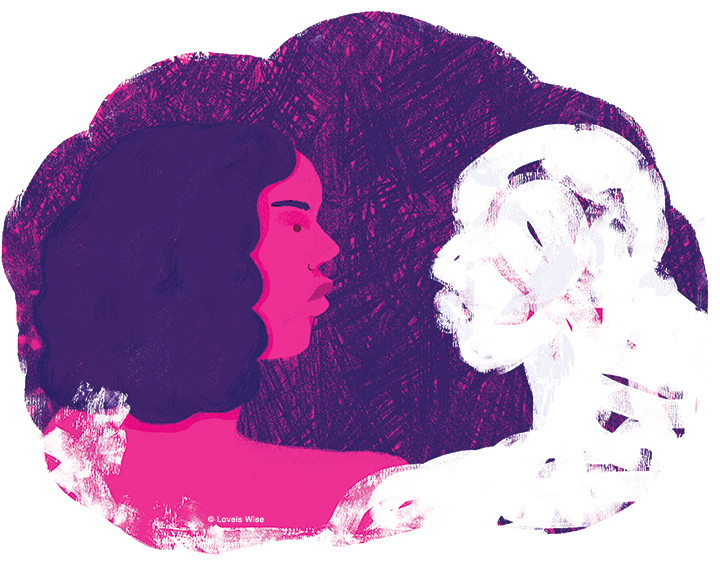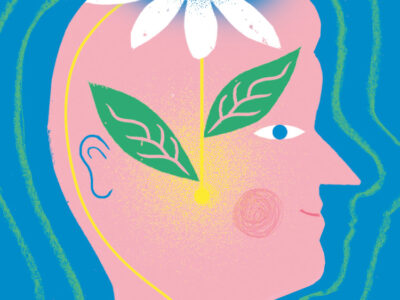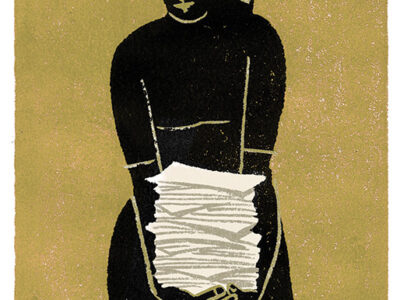
At the Center for the Treatment and Study of Anxiety, PTSD treatment isn’t just for combat veterans.
A few blocks away from campus, five floors above Student Health Services, is Penn’s Center for the Treatment and Study of Anxiety (CTSA). It’s an innocuous-looking place. There’s a waiting room littered with magazines, a synthetic smell of air freshener, a receptionist checking appointments. Inside, though, individual patients face therapists and shut their eyes. They try to direct their minds to the very center of their trauma, remembering the fine details of their worst ordeals: what happened first, what happened next, what they felt in those moments—the crinkle of fabric in their hands, or the trail of sweat down their necks. They keep up the intensity for 90-minute sessions, repeated weekly for between eight and 15 weeks.
These exercises, which form the basis of Prolonged Exposure (PE) therapy, have particular relevance at the present moment. A 2013 study reported in the Journal of the American Medical Association found that it cured more than 80 percent of teenaged girls suffering from PTSD in the wake of sexual assault.
The #MeToo movement has propelled a national conversation about the pervasiveness of sexual assault. But the mental health implications of rape and assault are often missing from the conversation. And that is especially true for PTSD, which is strongly associated with war trauma.
“If you were sexually abused or sexually attacked and you have symptoms of PTSD, you actually are not likely to identify [as having] PTSD these days,” says Edna Foa, the center’s director and a professor of clinical psychology in psychiatry. “Because all of the articles in the newspapers—the majority of them talk about PTSD and combat.”
Foa developed PE therapy and is a leading expert in anxiety disorders and trauma [“Gazetteer,” Jan|Feb 2006]. Time magazine named her one of its most influential 100 people of 2010 for her work on PE. In April, she received the Carole Johnson Humanitarian Award from Women Organized Against Rape, Philadelphia’s full–service rape crisis center, for her work.
The symptoms—and the treatment—for PTSD are the same regardless of what kind of event triggers the condition. “It’s not trauma–specific, it’s PTSD–specific,” says Anu Asnaani, an assistant professor of clinical psychology in psychiatry and a member CTSA’s clinical staff. Patients commonly report sensations of re–experiencing the event in some way (in nightmares, flashbacks, or “losing sense of space and time”); strong physical and emotional reactions to reminders of the trauma; avoidance symptoms (substance use, steering clear of reminders of the trauma); negative thoughts about themselves, others, or the world at large; and difficulties trusting other people. There are also a cluster of symptoms known as hyperarousal symptoms: bursts of anger, intense startle reactions, and impulsivity. Difficulties with sleep and concentration are also typical. These phenomena are somewhat normal a month after a traumatic event occurs, Asnaani says. “But when it goes past a month—when it’s sticking around—that’s when it’s starting to cause trouble.”
She often treats patients who seek help a decade or more after experiencing sexual violence—people who were assaulted in college or in their early 20s, who come to the center in their 30s.
“If you experience a traumatic event in your life, which a lot of people do, 80 to 85 percent of them will navigate that naturally,” says Thea Gallagher, CTSA’s clinic director. “They talk about it, they get through it, they process, they’re sad, they grieve. What Dr. Foa realized was that these people who were developing PTSD were people who were avoiding it, people who weren’t talking about it, people who were adjusting their lives to avoid reminders of that traumatic event,” Gallagher adds. “They started making their lives smaller and smaller and smaller, thinking it was going to make them feel better, but actually they felt worse.” She estimates that about 25 percent of the patients treated at the center have PTSD.
She says she has felt the impact of #MeToo at the CTSA in recent months. “I’ve had a couple of patients who, out of nowhere, decided to tell me about a traumatic event,” she said. “I feel like it is getting people to talk about it more, to think about it more.” That’s good, she says, because “it’s empowering people to do PE.”
That empowerment is a key aspect of CTSA’s mission: ensuring that those who undergo treatment realize that PTSD doesn’t imply weakness. There can be a stigma attached to the disorder, Asnaani says. But “the bravest people I know are people who have been through trauma, who struggled through PTSD,” she adds. “They hit rock bottom, and they came back.”
Nevertheless, some sexual assault survivors undergoing treatment for PTSD find the constant news cycle upsetting. “I’ve had women in the middle of the #MeToo movement who say, ‘I can’t own it like these women can,’” Asnaani reflects. “And I say, ‘you don’t need to.’ That’s the great thing about this movement. You can own as much of it as you want … you don’t need to share your trauma to get over your trauma.”
She laughs. “Except for with your therapist.”
—Dani Blum C’18




